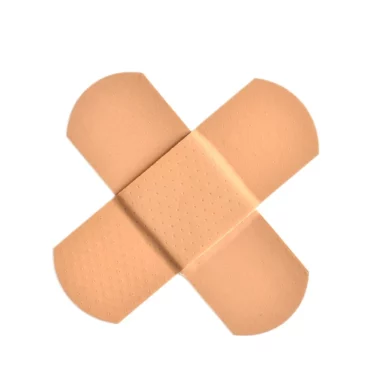Introduction to Degloved Face
A degloved face is an extremely severe and rare injury involving separating skin and underlying tissues from the facial bones. This type of injury is often the result of significant trauma and requires immediate and specialized medical attention. In this guide, we’ll explore the causes, treatment, and recovery associated with a degloved face, emphasizing the importance of both physical and psychological healing.
What is a Degloved Face?
A facial degloving injury occurs when the skin and soft tissues of the face are forcibly torn away from the underlying bone structure. This can lead to significant damage to muscles, nerves, and blood vessels and requires immediate medical intervention.
Causes of a Degloved Face
- High-Impact Trauma: Car accidents, falls from great heights, and severe blunt force injuries.
- Industrial Accidents: Injuries involving machinery or equipment.
- Sports Injuries: High-risk sports without proper protective gear.
Symptoms and Diagnosis of Degloved Face
- Visible Peeling or Separation of Skin
- Severe Pain and Bleeding
- Swelling and Bruising
- Difficulty in Moving Facial Muscles
Diagnosis typically involves physical examination and imaging tests like CT scans or MRIs.
Treatment of Degloved Face
- Emergency Care: Immediate medical attention is critical. Stabilization of the patient’s condition is the first step.
- Surgical Intervention: Reconstructive surgery is usually necessary. This may involve reattaching skin and tissues, repairing nerves and muscles, and grafting.
- Infection Prevention: Antibiotics are administered to prevent infection, a significant risk due to the exposure of deep tissues.
- Pain Management: Managing pain is crucial for patient comfort and recovery.
- Long-term Rehabilitation: Physical therapy, and in some cases, speech therapy, may be required.
Recovery and Rehabilitation of Degloved Face
The recovery process from a degloved face injury can be extensive and challenging. It often involves multiple surgeries and long-term rehabilitation to restore as much function and appearance as possible.
Psychological Impact of Degloved Face
The traumatic nature of a degloved face injury can have significant psychological effects, including PTSD, anxiety, and depression. Psychological counselling and support are vital components of the recovery process.
Prevention Tips for Degloved Face
- Safety Measures: Use protective gear, including seat belts, when engaging in high-risk vehicle activities.
- Workplace Safety: Adherence to safety protocols in industrial settings.
- Risk Awareness: Being aware of potential hazards in everyday activities.
Complications of Degloved Face
- Infections
- Scarring and Disfigurement
- Chronic Pain
- Loss of Sensation or Motor Function in Facial Muscles
Conclusion
A degloved face injury is a life-altering event requiring prompt and comprehensive medical care. The journey to recovery involves not just physical healing but also coping with the psychological aftermath of such a traumatic experience. Advances in medical science have made it possible to recover significantly from these injuries, but prevention and safety awareness remain crucial.
Frequently Asked Questions About Degloved Face Injuries
What exactly is a degloved face injury?
A degloved face injury is a severe form of trauma where the skin and soft tissues of the face are forcibly torn away from the underlying facial bones. It often involves significant damage to the facial muscles, nerves, and blood vessels.
How does a degloved face injury occur?
Such injuries typically occur due to high-impact trauma like car accidents, industrial accidents, or severe falls. They can also happen in sports injuries if proper protective gear is not used.
What are the first steps of treatment for a degloved face injury?
Immediate medical attention is crucial. The first step is stabilizing the patient’s condition, followed by surgical intervention to reattach and repair the damaged tissues.
Are degloved face injuries life-threatening?
Yes, degloved face injuries can be life-threatening due to the risk of severe bleeding and infection. They require immediate emergency medical care.
What does recovery from a degloved face injury involve?
Recovery often involves multiple reconstructive surgeries, long-term physical rehabilitation, and possibly speech therapy. Psychological support is also crucial due to the traumatic nature of the injury.
Can full functionality and appearance be restored after a degloved face injury?
While reconstructive surgery has advanced significantly, the extent of recovery can vary. Some patients may experience lasting effects, such as scarring or altered sensation.
What are the long-term complications associated with a degloved face injury?
Long-term complications can include chronic pain, scarring, disfigurement, loss of sensation, and psychological impacts like PTSD or depression.
How important is psychological treatment after a degloved face injury?
Psychological treatment is essential. The trauma of the injury and its impact on appearance and function can have significant psychological effects, which need to be addressed as part of the recovery process.
Can degloved face injuries be prevented?
While not all such injuries can be prevented, using protective gear in high-risk activities and adhering to safety protocols can reduce the risk.
Is there a risk of infection with degloved face injuries?
Yes, there is a high risk of infection due to the exposure of deep tissues. Infection control is a critical part of treatment, often involving antibiotics.











